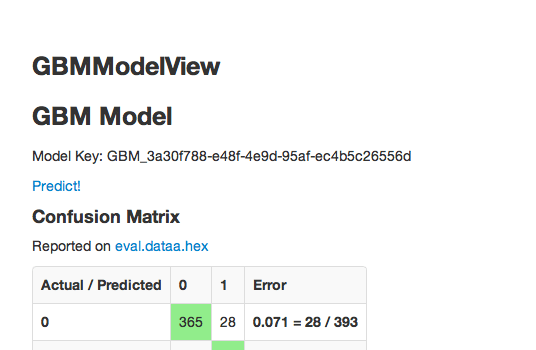-
Platform
Generative AI
-
GenAI App Store
Develop, deploy and share safe and trusted applications for your organization
-
Gov GenAI App Store
See the power of GenAI’s potential with public sector use cases
-
h2oGPT and H2O LLM
Create private, offline chatbot applications with open source H2O LLM Studio
- Platform
Predictive AI
-
GenAI App Store
- Solutions
-
Customers
- Partners
-
Resources
- Events
-
Company
BLOG
GBM on Ecology - Recreating a model made for R

By H2O.ai Team | minute read | October 22, 2013

In the last couple of weeks we’ve had two meetups on GBM (gradient boosted classification and regression ), and hence a lot of excitement about running the algorithm as presented by Cliff, Earl and Dr. Hastie. You can find the hella cool videos of both presentations here: http://www.youtube.com/0xdata
One of my favorite articles on GBM is a great case study from ecology, Elith, Leathwick & Hastie (2008). You can find the original article here: http://onlinelibrary.wiley.com/store/10.1111/j.1365-2656.2008.01390.x/asset/j.1365-2656.2008.01390.x.pdf;jsessionid=5B5FE919D24D8C3EA12FCB74BF352C62.f04t04?v=1&t=hn3iw9wm&s=29c201e8d1d94504ec9e07dcb12bfb2cb539fe7e
The authors kindly made their data and process in R publicly available, so you can get the data and try the model for yourself.
Here is the final model presented – carried out in H2O. Note that data were originally split into testing and training data (called model and eval data respectively in their available download).
The model was originally specified on 14 variables and 1000 observations. The dependent variable is found in column 2, named “Angaus”, and about 80% of the data in the column are 0. In the original paper the family was specified as Bernoulli, with a complexity of 5, and a learning rate of .01.
We recreated the original model in H2O. The specification is depicted below, as well as the output. Note that the X variable field asks for opt out variable specification, and that both the training and testing data sets are set in the model specification page (so your model output is automatically applied to the testing data if you specify it – which is a feature I’m pretty fond of). Also notice that the model is specified as a classification because the dependent variable is a binomial.
Explore similar content by topic

H2O.ai Team
At H2O.ai, democratizing AI isn’t just an idea. It’s a movement. And that means that it requires action. We started out as a group of like minded individuals in the open source community, collectively driven by the idea that there should be freedom around the creation and use of AI.
Today we have evolved into a global company built by people from a variety of different backgrounds and skill sets, all driven to be part of something greater than ourselves. Our partnerships now extend beyond the open-source community to include business customers, academia, and non-profit organizations.
Ready to see the H2O.ai platform in action?
Make data and AI deliver meaningful and significant value to your organization with our platform.








